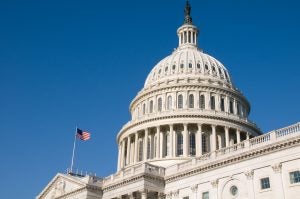Congress should restore critical methane pollution standards
By Rosalie Winn and Raisa Orleans
EDF Legal Fellow Edwin LaMair contributed to this post.
Lawmakers last week introduced joint resolutions under the Congressional Review Act to restore widely-supported methane pollution protections and allow the Environmental Protection Agency to move forward swiftly with ambitious next-generation standards for new and existing oil and gas facilities. The move has received broad support from environmental groups and at least one industry trade group.
The resolutions have widespread support among both House and Senate leadership and will be fast-tracked in the coming weeks.
EPA first adopted the standards in 2016 to reduce the oil and gas industry’s pollution of methane — a potent greenhouse gas and the primary component of natural gas — along with other smog-forming and hazardous local air pollution.
Methane is responsible for a quarter of the warming that we are experiencing today, and the oil and gas industry is the largest industrial source of methane pollution in the U.S. Local health-harming pollution from the industry impacts more than 9 million Americans who live on the frontlines of oil and gas development.
Recognizing the danger of and common-sense, cost-effective solutions to methane pollution, many oil and gas operators, natural gas users, such as utilities, and environmental and health groups all support federal standards. Even the American Petroleum Institute has gone on record supporting federal methane regulations. Improved technologies and practices allow operators to fix methane leaks cost-effectively, increasing natural gas recovery and lowering emissions.
In September, despite widespread opposition, even from within the oil and gas industry, the Trump administration finalized a rollback of the methane standards, while attempting to block EPA from controlling pollution at older facilities — which are responsible for roughly 75% of the oil and gas industry’s methane pollution.
Passing the CRA resolution would immediately reinstate safeguards at facilities exempted under the Trump rollback, preventing hundreds of thousands of tons of methane and local air pollution. The resolution would give EPA the room it needs to begin quickly advancing its climate and environmental justice goals by strengthening the 2016 standards and moving to implement science-based standards for older, high-emitting facilities.












